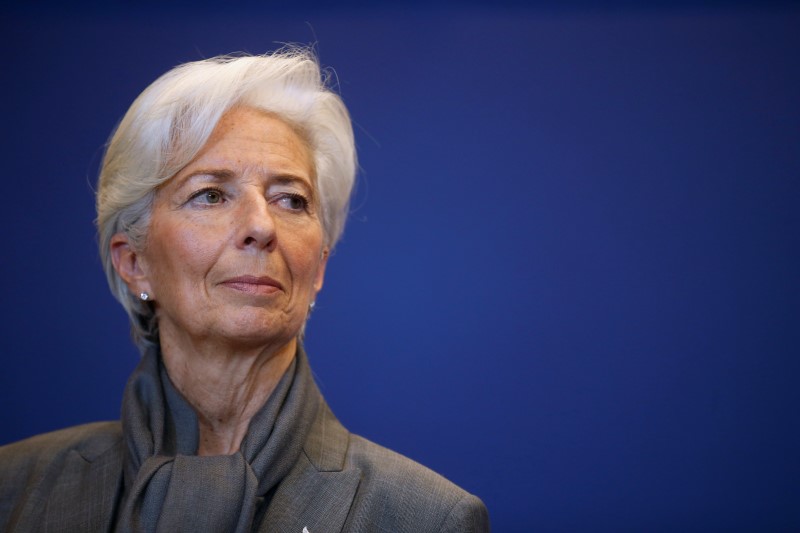(Bloomberg) -- The European Central Bank kept monetary stimulus unchanged at President Christine Lagarde’s first policy meeting, shifting the focus to when she’ll announce her review of the institution’s strategy for safeguarding the euro-zone economy.
The ECB kept its deposit rate at a record-low minus 0.5%, and bond purchases at 20 billion euros ($22 billion) a month, sticking to a controversial package unveiled in September. Lagarde, who has said little on monetary policy since starting in November, will hold a press conference at 2:30 p.m. in Frankfurt.
Follow Lagarde’s press conference in our live blog
The president could use her briefing to signal a start date for the first comprehensive evaluation of the ECB’s mission in 16 years. While that exercise will focus on whether the inflation goal needs to be adjusted, the Frenchwoman has made clear that she also wants to engage in broad topical issues such as fighting climate change.
That drive has already concerned some officials, who worry it’ll divert from their primary mandate of restoring price stability. Inflation has averaged just 1.2% so far in 2019, well short of the target of just below 2% -- despite years of unprecedented and often contentious stimulus under Lagarde’s predecessor, Mario Draghi.
As the first ECB head never to have worked at a central bank, Lagarde’s justification of the current measures are likely to be closely scrutinized by economists and investors. She’s spent her initial six weeks learning the ropes, addressing divisions between officials, and urging governments to help revive feeble growth.
She’ll also unveil the latest macroeconomic projections, including a first reading for 2022. While some indicators have suggested lately that the slowdown might be easing, Germany remains embroiled in its worst manufacturing slump in a decade. The U.S.-China trade war and Brexit have continued to weigh on growth.
Thursday’s policy announcement confirmed that asset purchases won’t end until “shortly” before the first rate hike, which would require inflation to be thoroughly within reach of its target.
Any indication that the outlook is set to remain bleak over the next years will raise questions over how much ammunition the central bank has left. Even officials most supportive of stimulus have signaled reluctance to cut the deposit rate deeper below the current level, and Lagarde herself has warned about detrimental side effects such as financial bubbles, squeezes on bank profitability and discontent among savers.
